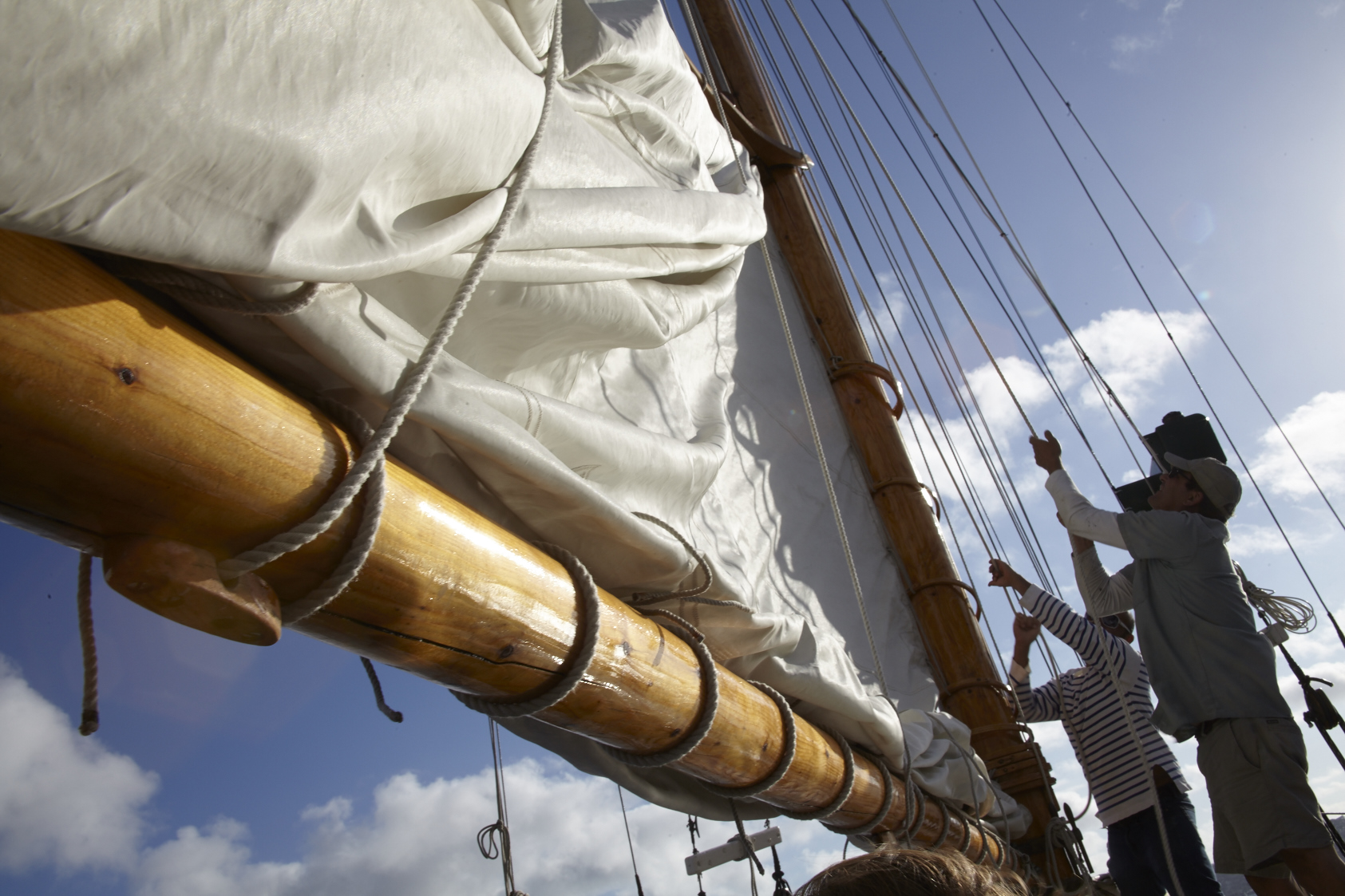Raising Sails

Sails are raised or lowered by lines called halyards. A gaff sail is raised using a halyard for the throat and a halyard for the peak, and must be raised together. Halyards are named for the sails they raise, for example the main throat halyard raises the throat of the mainsail. The staysail halyard raises the staysail and so on. Lines that control the angle of the sail to the wind are called sheets. The mainsheet controls the mainsail; the staysail sheet controls the staysail. These sheets are provided with a block and tackle to provide a better purchase (mechanical advantage) to make it easier control the sail. The jib and jib topsail are each controlled by two sheets, one of which is used depending on which side of the vessel the sail is drawn to.
It is best if the vessel is head-to-wind when hoisting or raising the mainsail. Headsails can be set when the vessel is close to the wind or on the fly. Sails are usually set from the farthest sail aft moving forward until all sails are set. It is important to know and listen for commands so that sails can be raised or lowered properly.
Mainsail
After removing sail cover, while the boom is in the gallows set the topping lift and free the mainsheet. Remove sail ties and free any lines that may restrict hoist of sail are free (reef lines, flag halyard, topsail sheet). On command, haul on the throat and peak halyards together so that the gaff raises horizontally, usually the throat will raise faster than the peak so it is important to watch progress as sail is raised and adjust.
When the throat is almost at full hoist hold the peak and the throat will be sweat up to full height and belayed. When luff of sail has sufficient tension, raise peak to its proper height. There may be slight wrinkles in sail, which will disappear when topping lift is eased and wind fills the sail. Ease topping lift so that it does not ride along edge of sail. Using Mainsheet, trim the mainsail and begin sailing.
Headsails
The headsails on Liberty, (jib and jib topsail), are roller furling. That is they roll around the stay or luff wire that supports them. Rolling out like a window shade the furling line is. released and the. sheet is. hauled to draw the. sail out. Care must be. taken to control the furling line as the sail is drawn out to prevent the line from wrapping over itself on the furling drum causing it to become trapped and unable to be released or hauled in. In setting the headsails one crewmember will control the furling line while another will haul on the sheet unfurling the sail. Once unfurled, sail can be sheeted to correct angle for the wind. The staysail is hanked (attached by clips) to the inner forestay. It is raised and lowered by the staysail halyard. The trim of the sail is controlled .by a single sheet running through a block and tackle attached to a deck fitting just forward of the mast.
Once sails are set, lines should be coiled and properly hung from pin rails or stowed